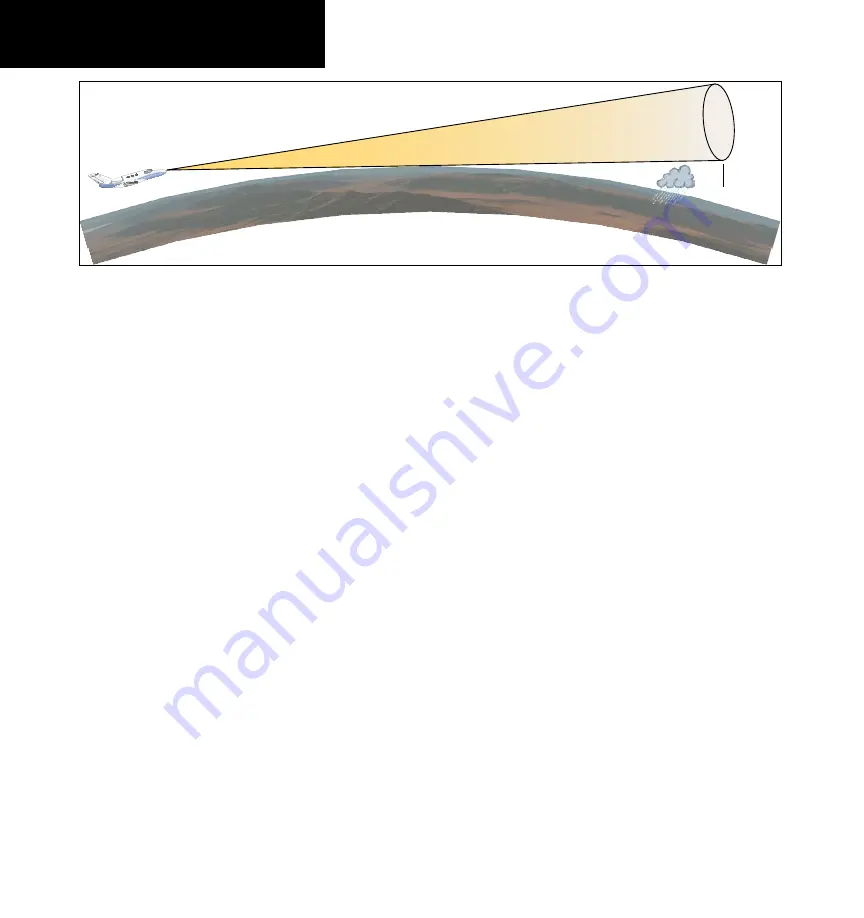
9
190-00607-02 Rev C
Detailed Operation
NM
Radar Beam in Relation to the Curvature of the Earth
Radar
It is important to understand the concept of the
antenna beam illumination. The radar beam is much
like the beam of a spotlight. The farther the beam
travels, the wider it gets. The radar is only capable of
“seeing” what is inside the boundaries of the beam.
The figure on the previous page depicts a radar beam’s
characteristics. The figure illustrates vertical dimen-
sions of the radar beam, although the same holds
true for the horizontal dimensions. In other words,
the beam will be as wide as it is tall. Note that it is
possible not to see areas of precipitation on the radar
display because of the antenna tilt setting. With the
antenna tilt set to zero in this illustration, the beam
overshoots the precipitation at 15 nautical miles. The
curvature of the earth can also be a factor, especially at
range settings of 150 nautical miles or more, as shown
in the above figure.
Radar Signal Attenuation
The phenomena of weather attenuation needs to be
kept in mind whenever operating the weather radar.
When the radar signal is transmitted, it is progressively
absorbed and scattered, making the signal weaker.
This weakening, or attenuation, is caused by two
primary sources, distance and precipitation.
Attenuation because of distance is due to the fact
that the amount of radar energy at a distance from the
antenna is inversely proportional to the square of the
distance. The reflected radar energy from a target 40
miles away that fills the radar beam will be one fourth
the energy reflected from an equivalent target 20 miles
away. This would appear to the operator that the storm
is gaining intensity as the aircraft gets closer. Internal
circuitry within the GWX 68 system compensates for
much of this distance attenuation.
Attenuation due to precipitation is not as predict-
able as distance attenuation. It is also more intense.
As the radar signal passes through moisture, a portion
of the radar energy is reflected back to the antenna.
However, much of the energy is absorbed. If precipita-
tion is very heavy, or covers a large area, the signal may
not reach completely through the area of precipitation.
The weather radar system cannot distinguish between
an attenuated signal and area of no precipitation. If the
signal has been fully attenuated, the radar will display
a “radar shadow”.
This appears as an end to the
precipitation when, in fact, the heavy rain may
extend much further.
A cell containing heavy pre-
cipitation may block another cell located behind the
first, preventing it from being displayed on the radar.
Never fly into these shadowed areas and never assume
that all of the heavy precipitation is being displayed







































